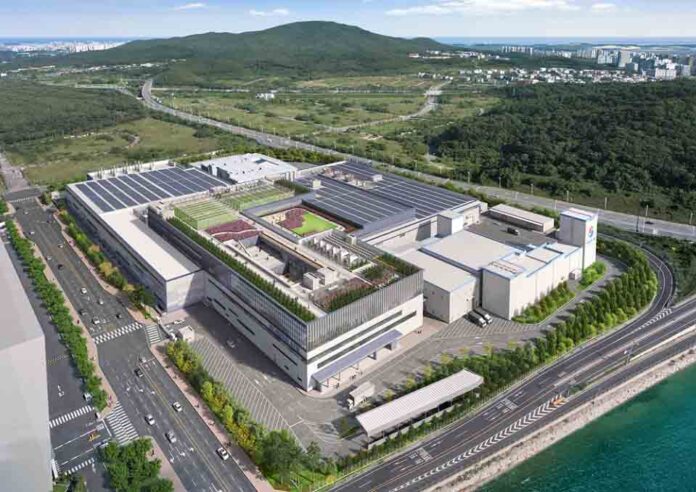Korean Air has broken ground on an impressive new aircraft engine maintenance cluster at Incheon International Airport in Unbuk, South Korea. This state-of-the-art facility, expected to be operational by 2027, is set to become the largest of its kind in Asia, reinforcing Korean Air’s position in the aviation maintenance, repair, and overhaul (MRO) industry.
Here are the key highlights of this groundbreaking project:
- Size and Scope:
- The new engine maintenance complex spans over 140,000 square meters and comprises seven levels.
- With a total investment of 578 billion won, this facility is being constructed by Kolon Global.
- It will be strategically located next to the existing Engine Test Cell (ETC), which Korean Air has utilized since 2016.
- Streamlined Operations:
- Traditionally, engine maintenance was split between Korean Air’s Bucheon facility and final performance testing at the ETC in Unbuk.
- By centralizing all stages of engine maintenance at this single location, the cluster aims to enhance operational efficiency.
- Expanded Capacity and Engine Types:
- Korean Air plans to significantly increase its capacity to service aircraft engines, ramping up from 100 to 360 engines annually.
- The airline currently overhauls six engine models, including General Electric’s GE90-115B, CFM International’s CFM56, and Pratt & Whitney’s PW4000 and GTF.
- As part of the expansion, three additional engine models—GE’s GEnx and CFMI’s LEAP-1B—are being added to the lineup.
- Furthermore, Korean Air is exploring the possibility of maintaining Asiana Airlines’ engines, including the Rolls-Royce Trent XWB used in the Airbus A350.
- Job Creation:
- The new maintenance cluster is expected to generate over 1,000 new jobs, bolstering the domestic aviation MRO industry’s competitiveness and reducing reliance on foreign maintenance services.
Korean Air’s commitment to excellence and innovation in aircraft maintenance positions it as a leader in the global aviation landscape. As engines are the heart of any airplane, this cutting-edge facility will play a crucial role in ensuring safe and efficient air travel for years to come.






